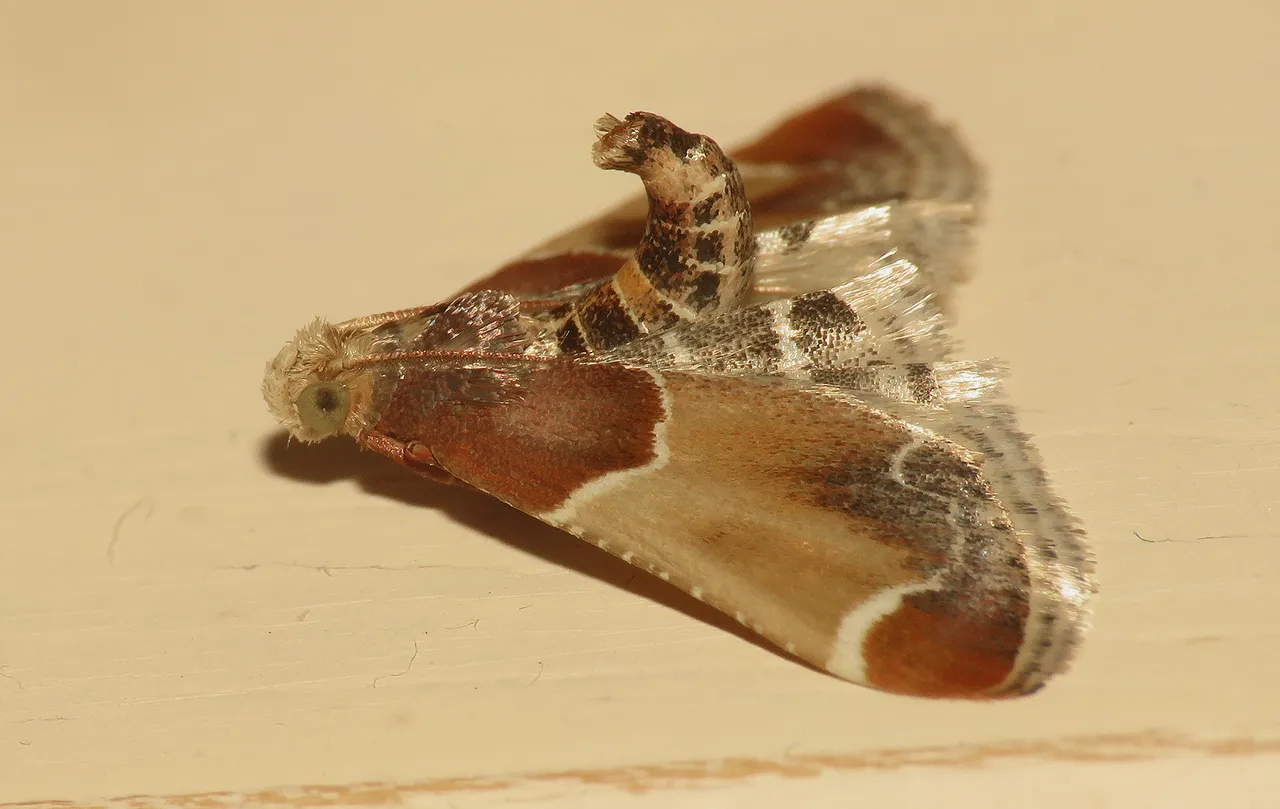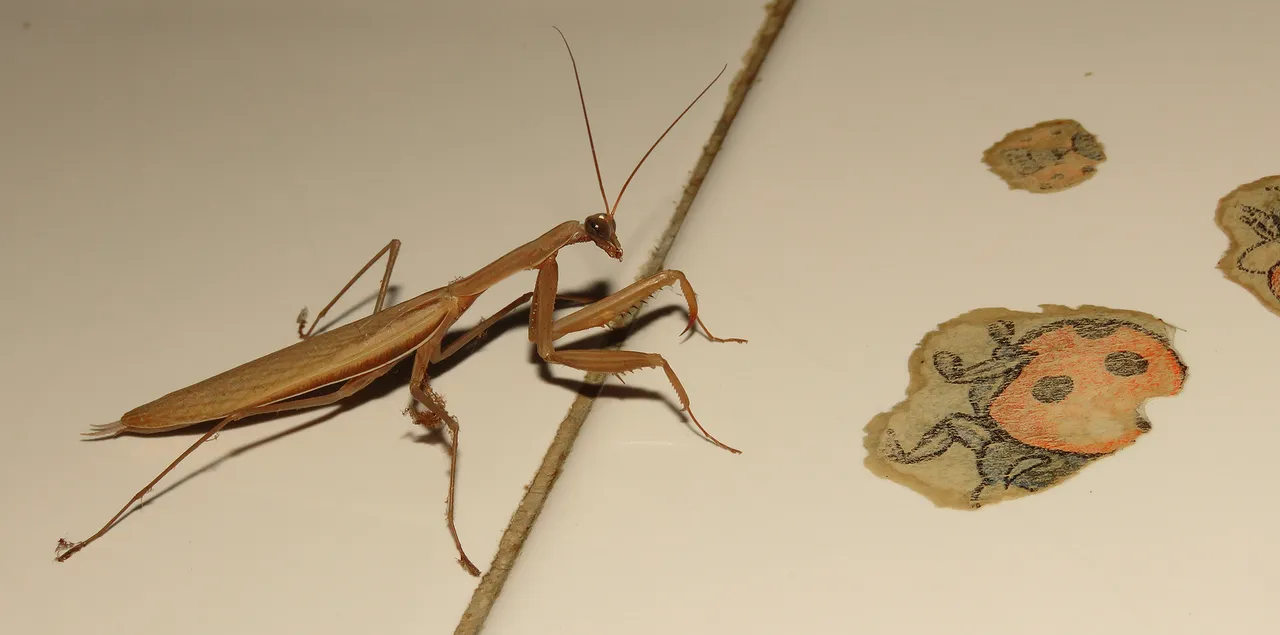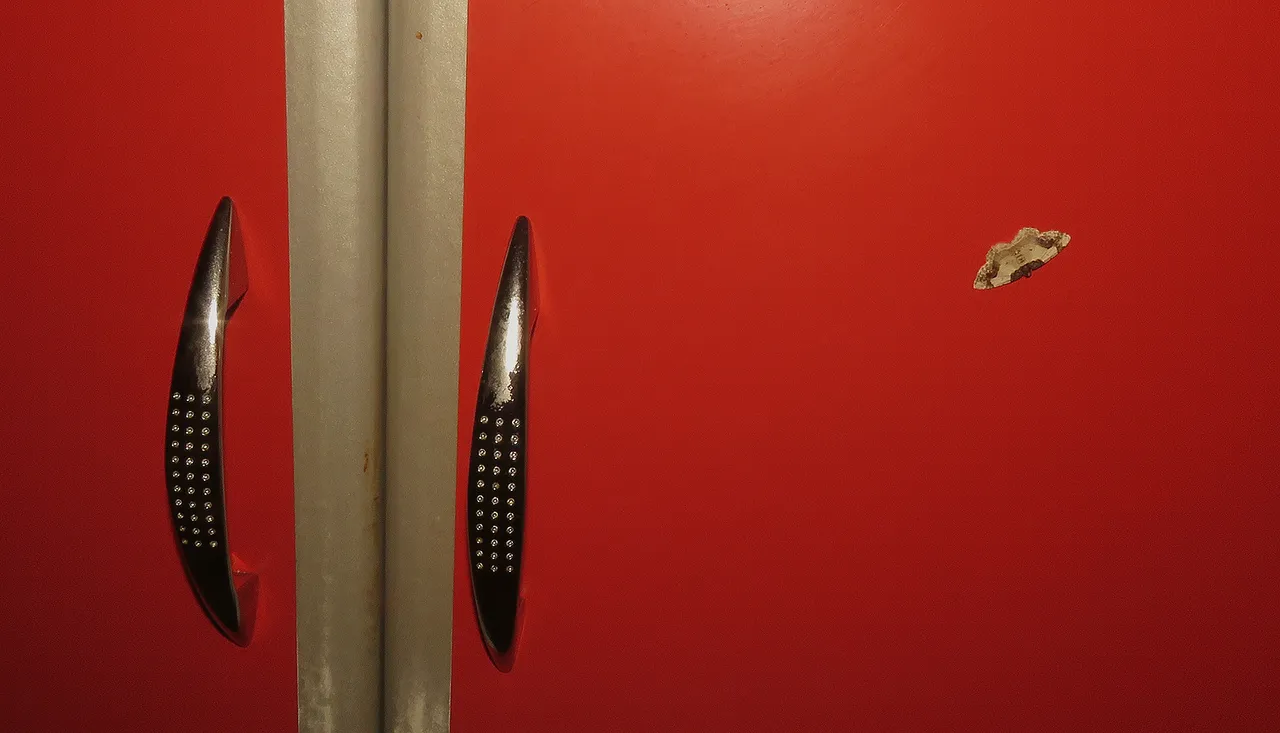Walking through the woods and across the meadows in search of something inspiring that could satisfy my appetite for macro is always a pleasure. Still, I don't have to leave the house to get interesting insects and other small arthropods for a post like this, especially not during the summer.

Some species share the house with me - others are occasional visitors.

This is the Pyralis farinalis, a moth from the Pyralidae family.
The word "farinalis" in its scientific name means "of the flour."
The larvae feed mostly on cereals, milled or in grain, but can also eat other types of stored vegetal food. Potatoes, for example, look very attractive for the Pyralis farinalis caterpillars.
In the absence of juicy food like grain or tubers, the larvae will eat bran, husk, or straw.
This cosmopolitan species is well adapted to living among humans.
There is one interesting and kinda fun fact I found out about this species today while preparing the post. Male moths sometimes exhibit odd sexual behavior. They can be seen attempting to mate with other species, such as Amyelois transitella. It is hypothesized that some species share the sex pheromone produced by females.

The Pyralis farinalis shown in this post was photographed on the 8 of June 2021 in my bathroom.
The next insect ...
... is an accidental visitor who isn't attracted by the goods stored under my roof. This is the Emmelina monodactyla, a moth from the Pterophoridae family.
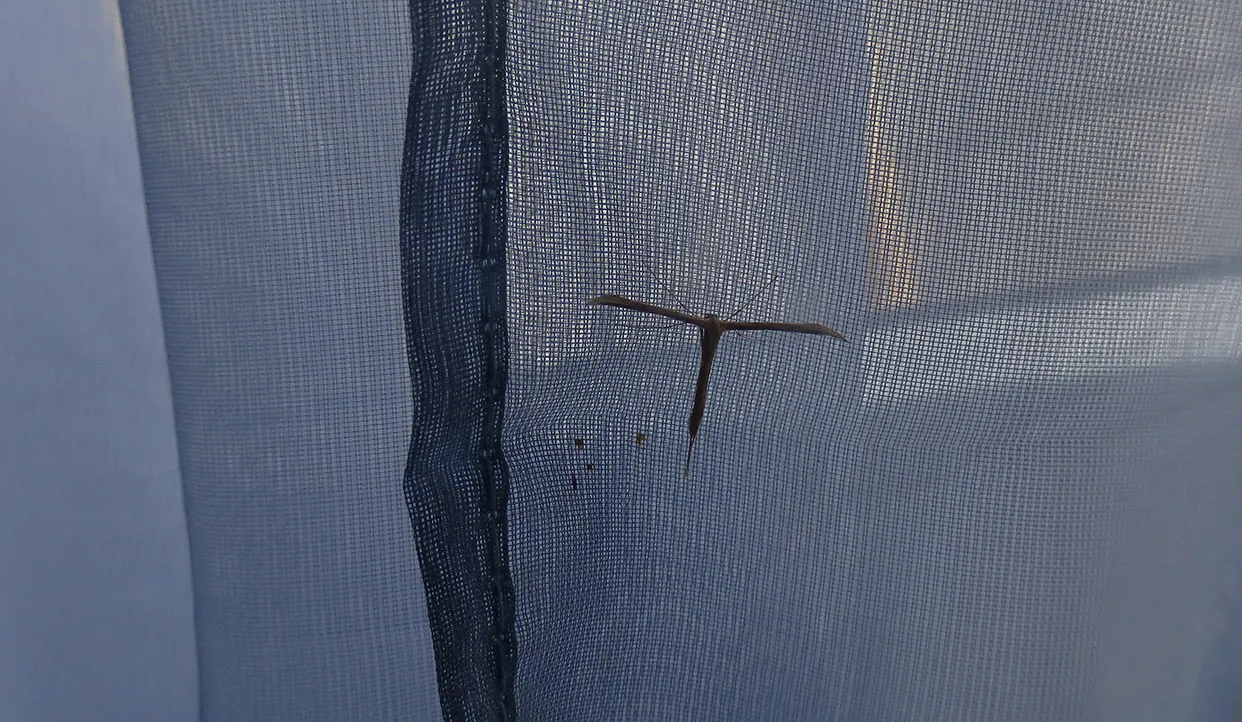
The larvae of this species feed on wild, self-seeding plants. Mainly on a wide variety of bindweed species (Convolvulaceae family).
Convolvulus arvensis is one of the plants present on my lawn.
In the absence of Convolvulaceae, they can eat some other plants as well.
The Chenopodium album that grows in my garden in summer is one of them.
The Emmelina monodactyla shown in this and the previous two photographs was caught resting on the curtains of my kitchen window on the 7th day of September 2021.

On the 4th of July 2022, a moth of that same kind was resting on the glass of the only window in the kitchen. It was an excellent opportunity to take a good look at the lower part of the moth's body including its face which is usually hidden.
I used the power of my macro lens to get closer and show more details in this shot.
The scorpion, shown resting on the greenish-yellow butterfly net made for kids, on the 26th of August 2021 at 18:19 ...

... was roaming the parquet-covered floor of my room a minute or two earlier.
Here you can see the scorpion exploring the net ...
... before finding a good place to rest on it.
I can't tell you what species of skorpion this is but I'm pretty sure it belongs to the genus Alpiscorpius of the Euscorpiidae family.
Quite a few arachnids can be often seen hanging around my place.
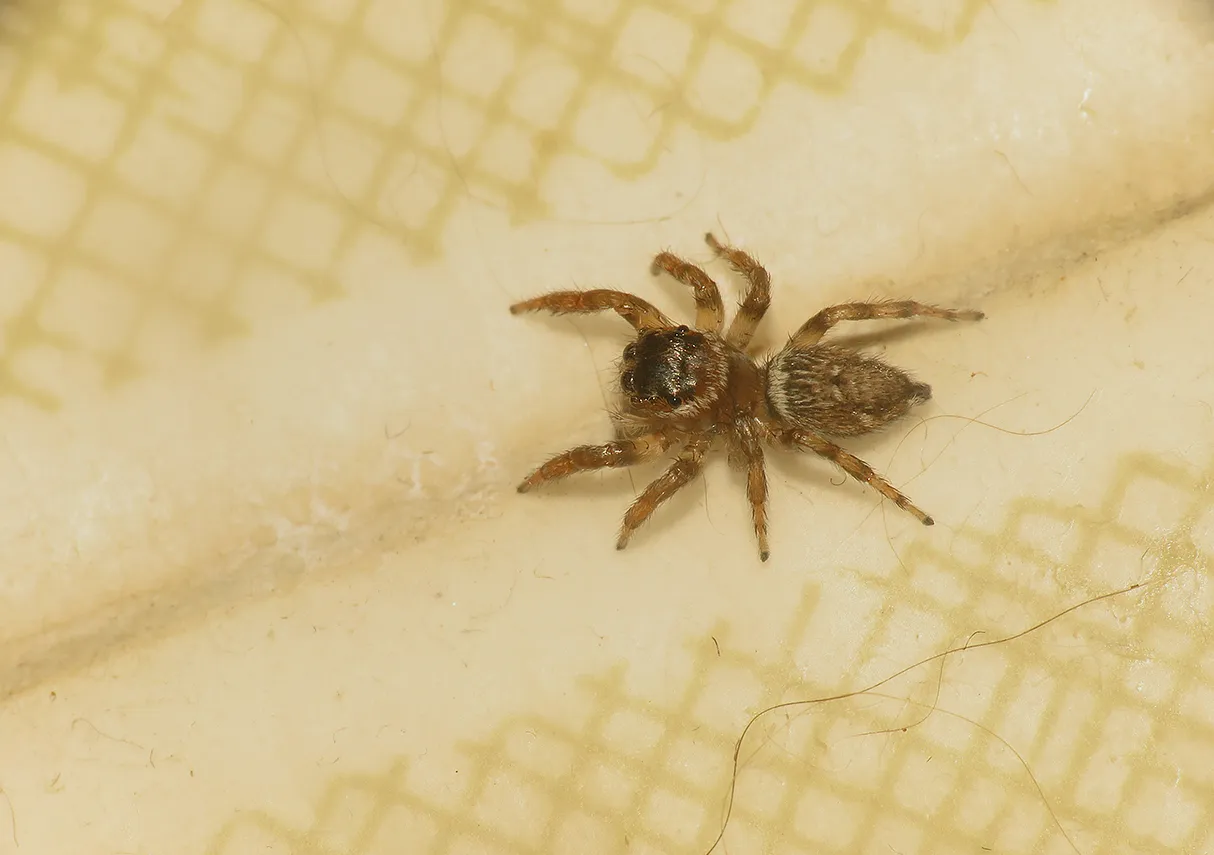
This jumping spider, the Evarcha jucunda from the Salticidae family, usually hunts for insects and other spiders outdoors, in my garden, and all around the yard. But I found this species inside the house as well from time to time.
The Evarcha jucunda shown in this and the previous photograph was jumping and crawling across the wall tiles in my bathroom on the 8th of June 2021.

On the 4th of November 2021 ...

... I photographed a spider of the same kind on the bathroom window.

The spider, accompanied by its reflection, looked pretty cool while posing on the glass.

Half an hour later ...

... the same spider has caught a housefly (Musca domestica) ...
... always there on the bathroom window.

It was a surprisingly epic little scene.

Houseflies are especially numerous at the end of the summer and during the first half of the autumn.

These two were mating in my bathroom on the 26 of August 2021.
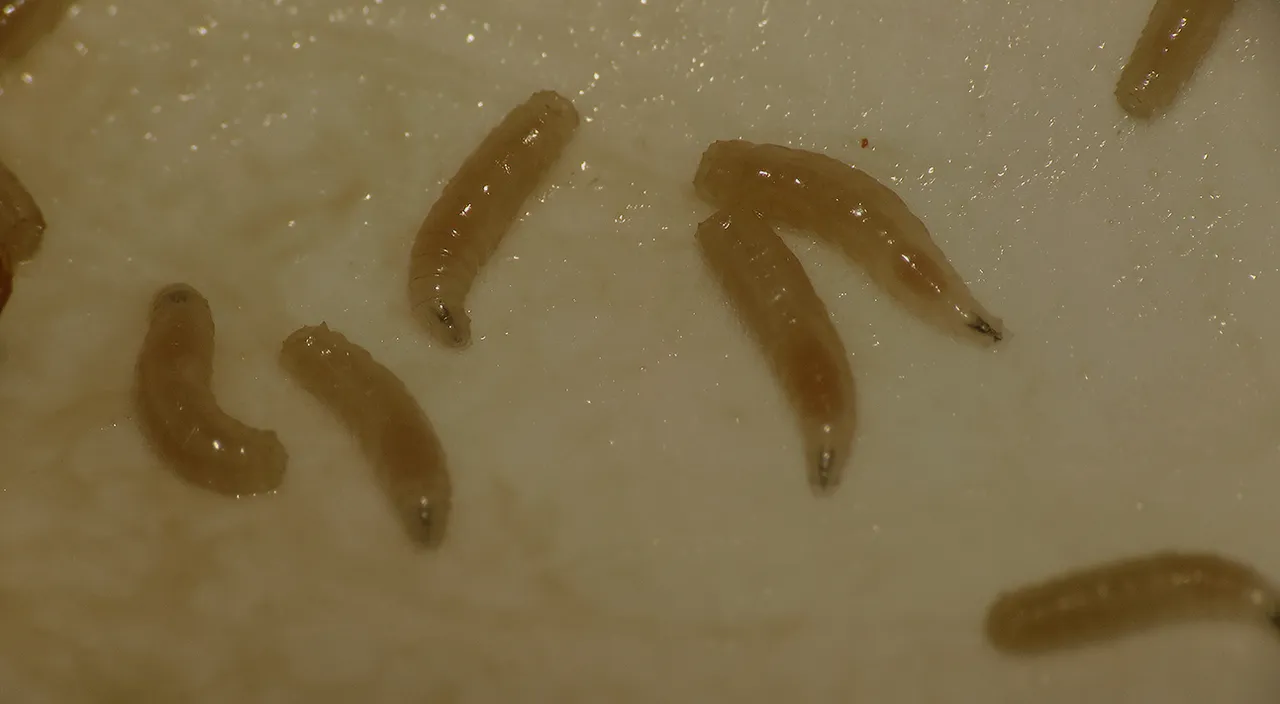
Here you can see a group of housefly larvae.
On the 18th of September 2021, I forgot about a piece of beef meat cocked in a soup. That thing remained in the fridge, hidden behind stuff bought later in the supermarket until everything started to smell rotten.
The maggots were well-fed and happy.

On the 5th of October, always in 2021 ...
... a mantis visited my kitchen.
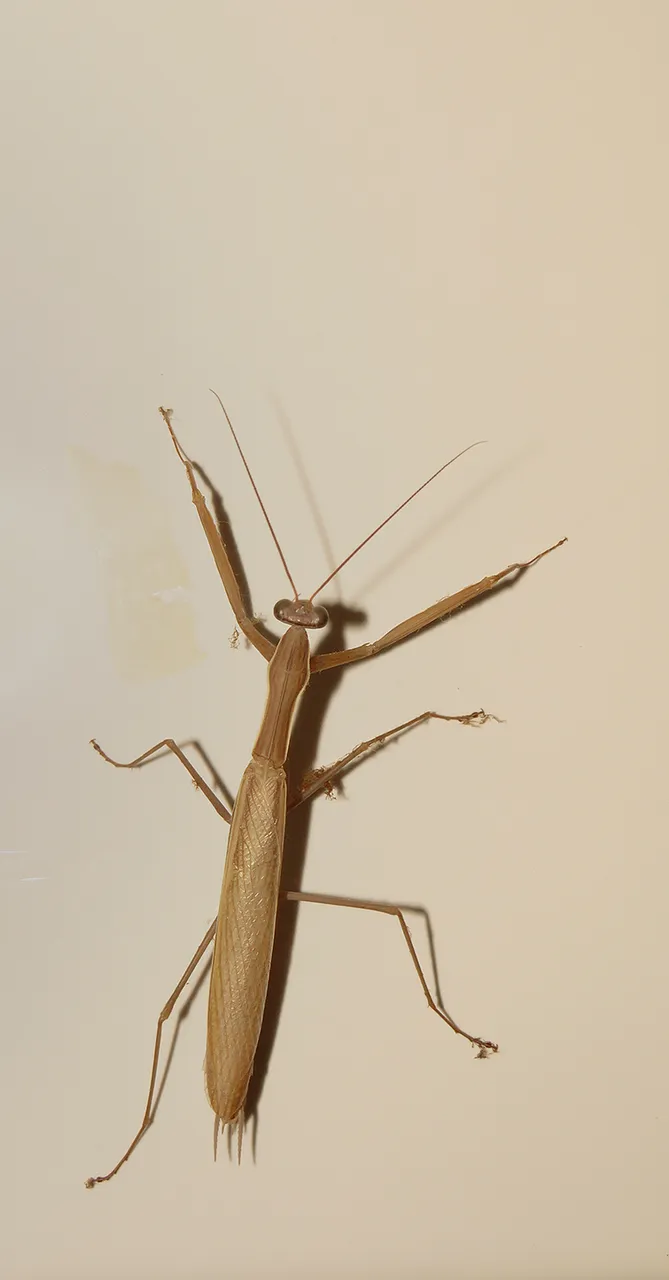
This is a male European mantis (Mantis religiosa).

Here you can see it posing on the colorful sugar pot near the kitchen sink.
I have some old washed-out ladybug stickers sparsely scattered across the wall tiles above the kitchen sink.
It looked a bit like the mantis was ready to catch the cartoonish ladybugs drawn on those stickers.

Here you can see another moth. This one was photographed on the 7th of September 2022 in my room. I can't tell you the name of the species but I'm sure that it belongs to the Pyralidae family. That's all I can tell you about the moth shown in the above photograph.
On the 11th of September 2021, while I was busy preparing the photographs for an insect-themed post that was probably published here on Hive a year or two ago ...
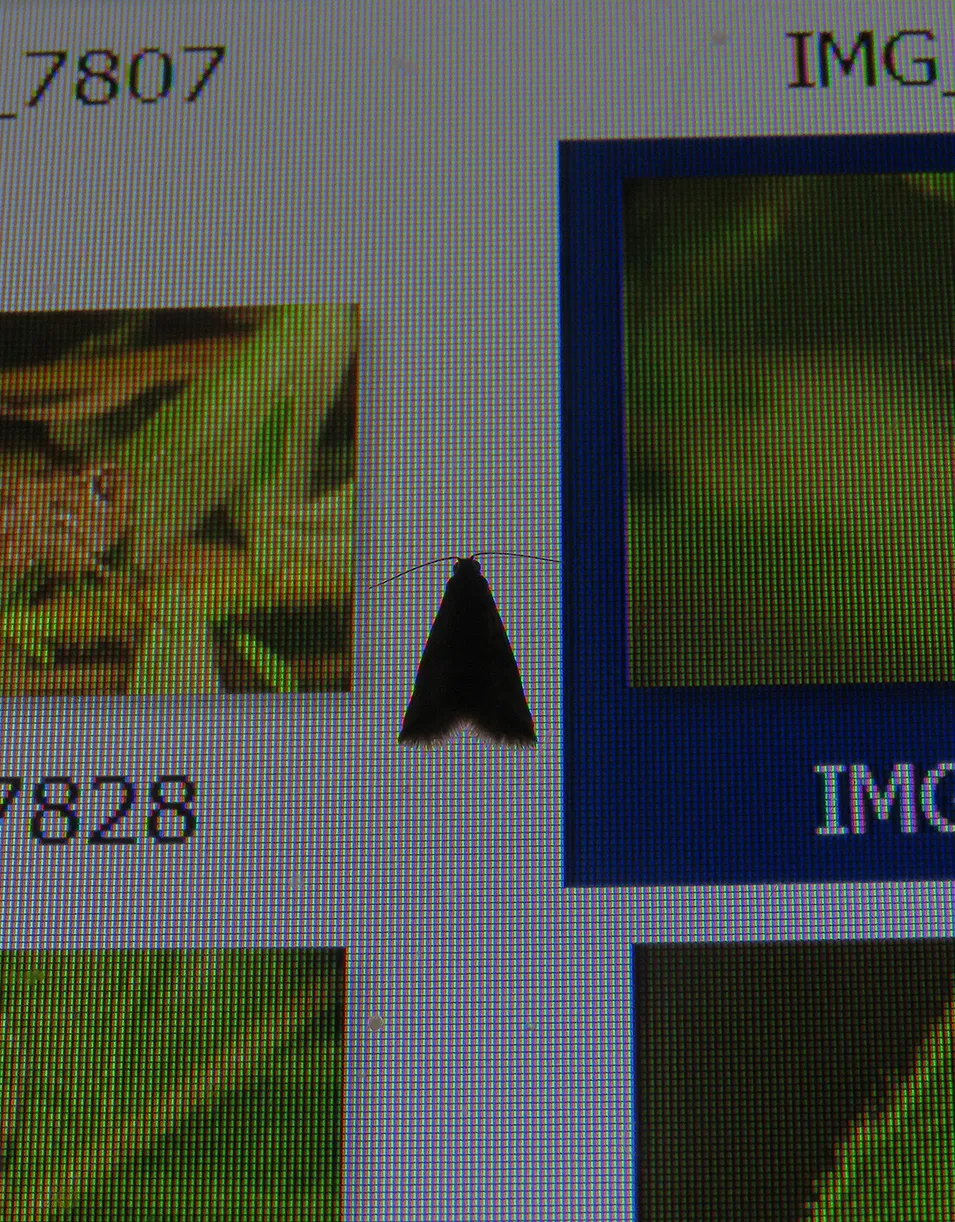
... another moth landed right between two of those photographs displayed on my computer screen.

It happened in the middle of the night. The visitor shown in this and the previous two shots was attracted by the light.
The name of the species is Zebeeba falsalis. It belongs to the Erebidae family.
Zebeeba is a monotypic genus which men's that has only one species. That species, Zebeeba falsalis, can be found in southern Europe, northern Africa, Asia Minor, and the Levant where it inhabits warm and dry habitats. Maquis. Stony meadows near the sea. Those kinds of places.
The larvae feed on various Asparagus species. Asparagus acutifolius which abounds here in my area is their favorite host plant.
I don't remember noticing this species before, and all the facts I just presented, I learned only today while preparing the post.

On the 7th of September 2020, this Ligdia adustata, a moth from the Geometridae family ...
... was resting on the vivid red surface of the kitchen cabinet above the sink.

The colors and patterns on the wings resemble the bird droppings.
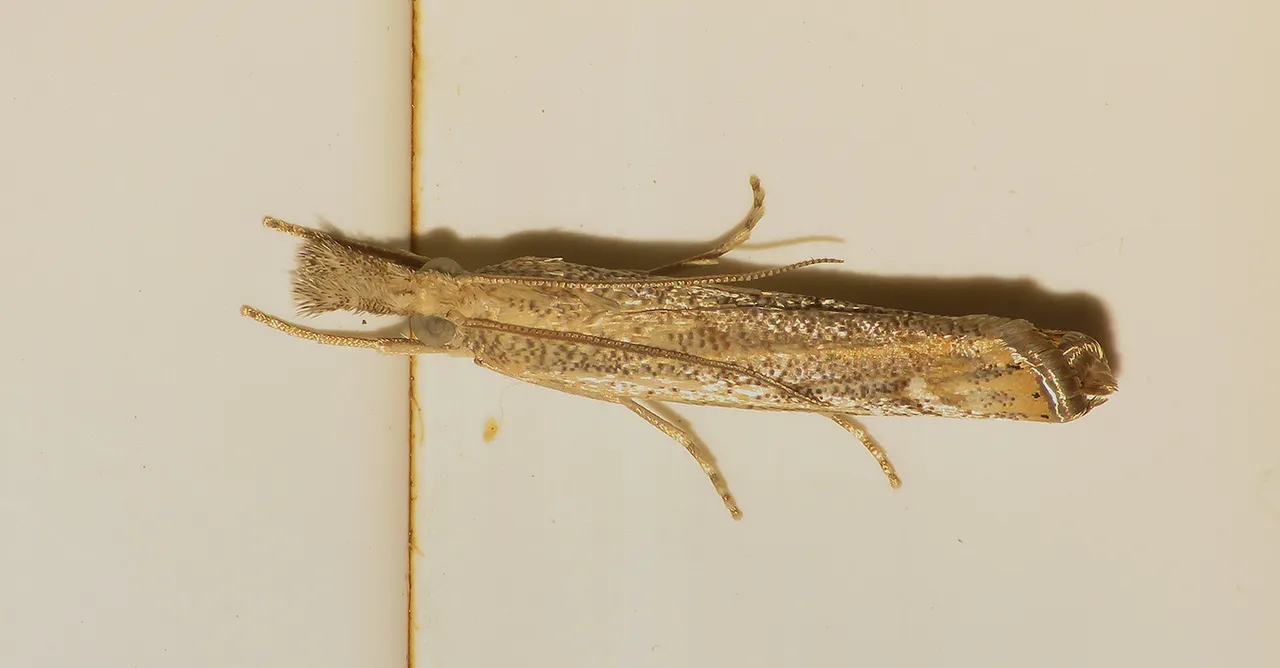
Here you can see the Agriphila tolli, a moth from the Crambidae family resting on the wall tiles between the kitchen cabinet and the sink.
The photograph was taken on the 9th of September 2020.

This lovely moth from the Geometridae family was photographed on the 21st of September 2020. The name of the species is Rhodometra sacraria. The moth was resting on the glass of my bathroom window.

Steatoda triangulosa, a spider from the Theridiidae family, is always present in my bathroom. I photographed it on the 4th of November 2021.

In this shot, the spider is crouched on its web in the corner of the ceiling.
Houses and other man-made structures are the favorite habitat of this species.
Steatoda triangulosa builds webs in dark, if possible humid corners. My bathroom offers the ideal conditions.
Many kinds of insects and other arachnids can become prey to the Steatoda triangulosa.

Podagrica malvae is a beetle from the Chrysomelidae family.

Both larvae and adults feed on various plants from the Malvaceae family. This beetle accidentally entered the house through the bathroom window.
In my yard, Podagrica malvae beetles prosper on the Malva sylvestris plant that grows on the lawn in my backyard.

The Podagrica malvae shown in today's post was photographed on the 6th of November 2021.
AND THAT'S IT. HOPE YOU ENJOYED THIS MACRO SAFARI THROUGH MY HOUSE. AS ALWAYS HERE ON HIVE, THE PHOTOGRAPHS ARE MY WORK.
The following links will take you to the sites with more information about the protagonists of today's post. I found some stuff about them there.
https://en.wikipedia.org/wiki/Pyralis_farinalis
https://en.wikipedia.org/wiki/Emmelina_monodactyla
https://en.wikipedia.org/wiki/Alpiscorpius
https://en.wikipedia.org/wiki/Evarcha_jucunda
https://en.wikipedia.org/wiki/Housefly
https://en.wikipedia.org/wiki/European_mantis
https://en.wikipedia.org/wiki/Pyralidae
https://en.wikipedia.org/wiki/Zebeeba
http://www.pyrgus.de/Zebeeba_falsalis_en.html
http://www.pyrgus.de/Ligdia_adustata_en.html
https://en.wikipedia.org/wiki/Agriphila_tolli
https://en.wikipedia.org/wiki/Rhodometra_sacraria
https://en.wikipedia.org/wiki/Triangulate_cobweb_spider
https://en.wikipedia.org/wiki/Podagrica_malvae
